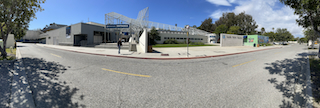
-
| 
-
| 
-
|
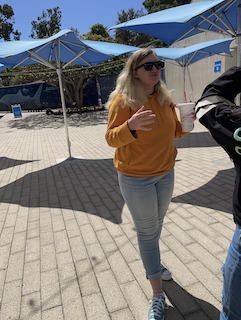
-
| 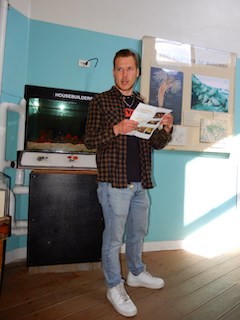
-
| 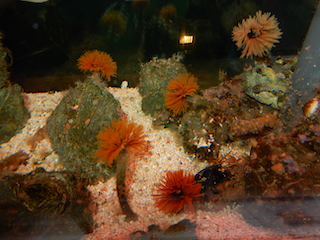
-
|
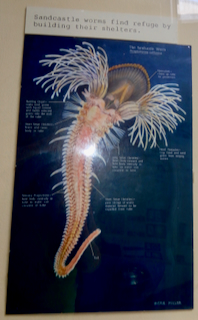
-
| 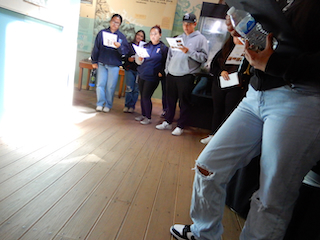
-
| 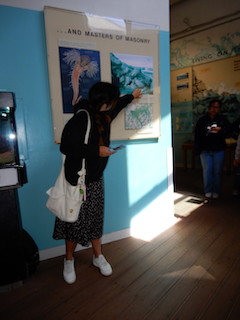
-
|
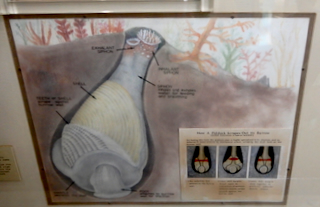
-
| 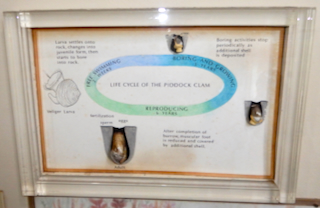
-
| 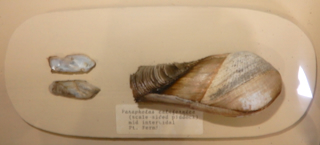
-
|
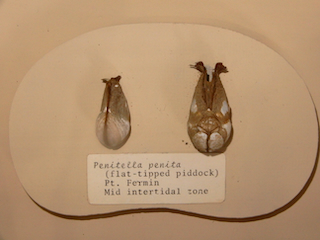
-
| 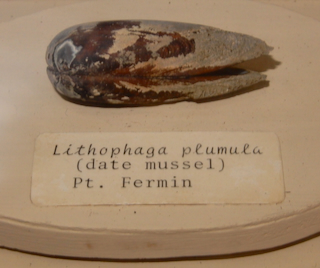
In checking this name in WoRMS (source 1), I learned that the currently
accepted name is Leiosolenus plumula (Hanley, 1843). I am always curious why name changes have been proposed, so I dug a bit further.
Lithophaga Röding, 1798 and Leiosolenus P. P. Carpenter, 1857 are two of the six currently accepted genera in the Mytilidae subfamily,
Lithophaginae (source 2).
Four other genera in the subfamily include 16 accepted species, total: Botula Mörch, 1853; Adula H. Adams & A. Adams, 1857;
Zelithophaga H. J. Finlay, 1926; and Fungiacava Soot-Ryen, 1969. The type species of Lithophaga is L. lithophaga (Linnaeus, 1758), from the Indian Ocean,
Europe, and Mediterranean, according to Linnaeus (source 3). From an image of L. lithophaga at WoRMS (source 4), it
resembles our local date mussel as a brown rock-boring mussel. Altogether there are nine accepted species of Lithophaga,
whereas there are 34 accepted species in Leiosolenus (source 5), making it by far the most species-rich genus in the subfamily.
The name change implies that southern California Leiosolenus plumula (date mussels) are only distantly related to Lithophaga lithophaga,
with closer affinities to the type species of
Leiosolenus, which is currently accepted as
Leiosolenus spatiosus (Carpenter, 1857) with a type locality of Mazatlán, Sinaloa, Mexico (source 6). In checking for sequences in
GenBank, I found that L. plumula has recently been sequenced, but these are apparently still unpublished sequences because a 2023 paper
by Sarah Hayes et al. is a very cool paper (source 7) but those authors did not include the L. plumula sequences, from specimens collected in the Gulf of Panama, in their published analyses.
Although they are credited to the same three authors, they are listed in a different order with lead author, Timothy Rawlings (source 8), so perhaps their is another manuscript in the works.
Still, I wonder if they are really the same species as in southern California. I happen to have sequenced these myself.
Links to cited sources:
1 -
2 -
3 -
4 -
5 -
6 -
7 -
8
| 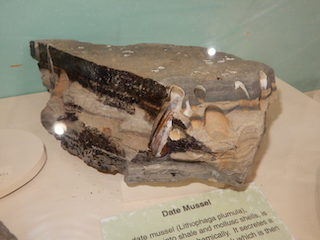
-
|
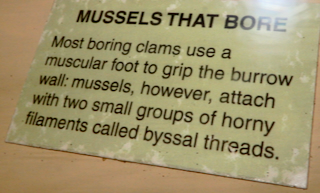
-
| 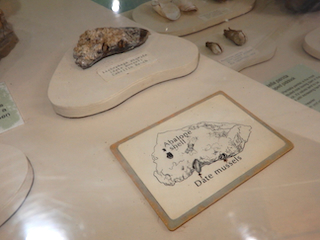
-
| 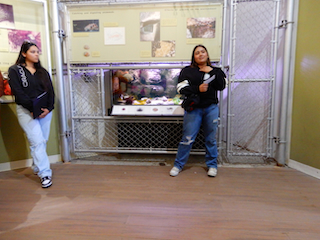
-
|
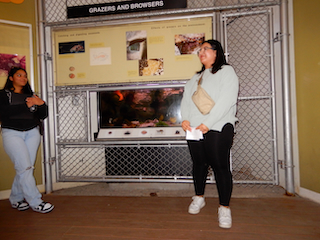
-
| 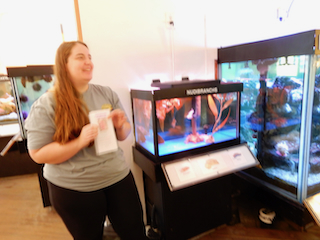
-
| 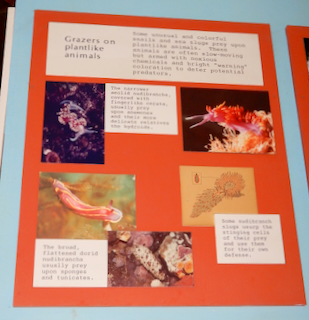
-
|
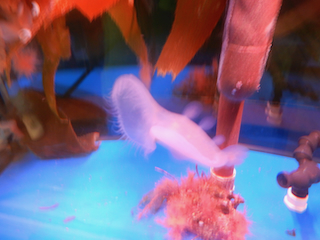
-
| 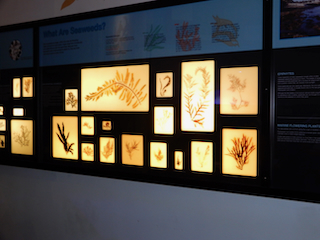
-
| 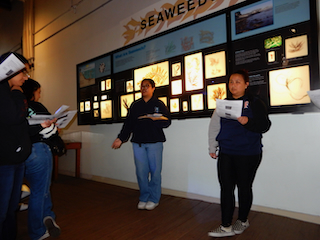
-
|
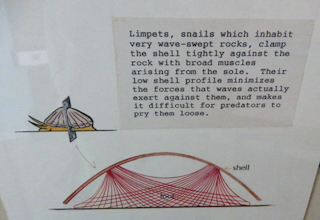
Even if it is a cartoon, this made me sad 8^(.
| 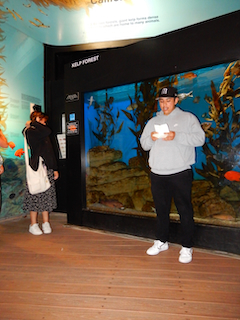
-
| 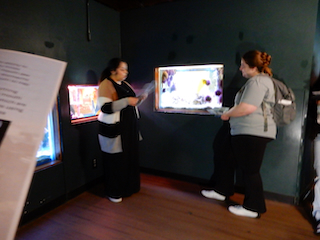
-
|
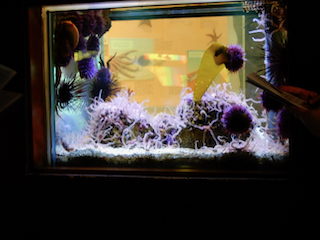
-
| 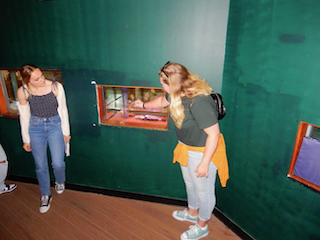
-
| 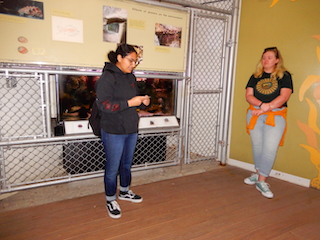
-
|
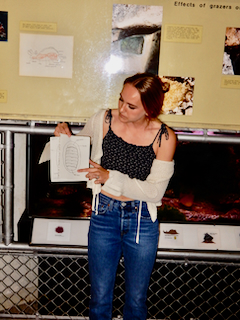
-
| 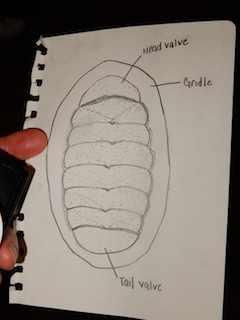
-
| 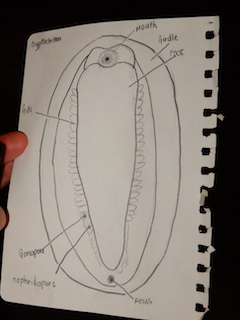
-
|
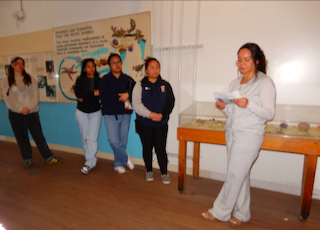
-
| 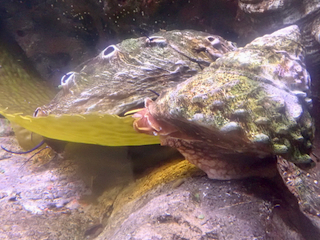
-
| 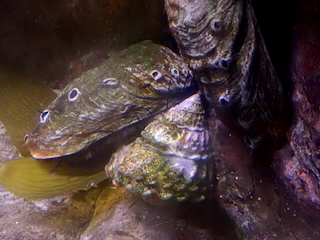
-
|
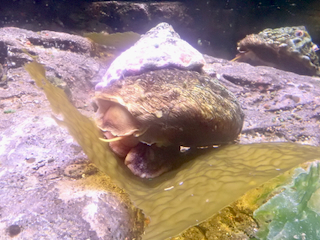
-
| 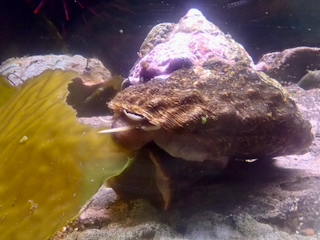
-
| 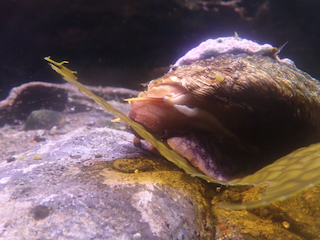
-
|
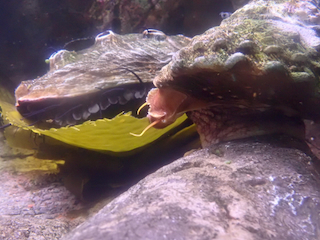
-
| 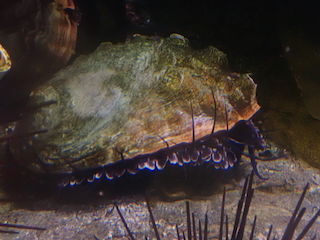
-
| 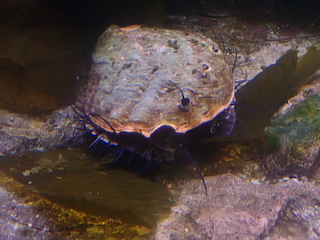
-
|
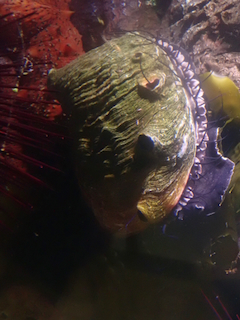
-
| 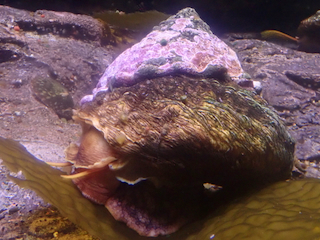
-
| 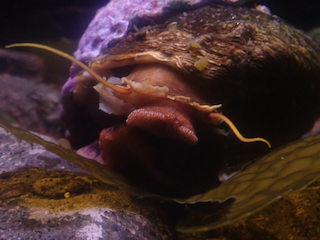
-
|
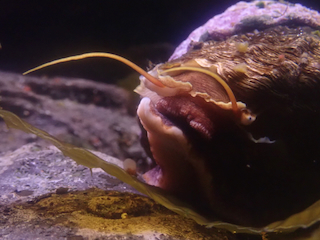
-
| 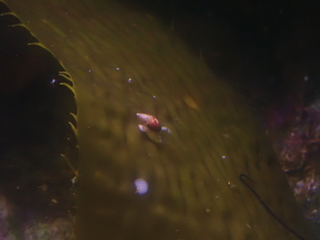
Alia carinata (Hinds, 1844) or carinate dove shell (Neogastropoda: Buccinoidea: Columbellidae)
crawling on the kelp fed to hungry abalones, wavy turban snails, and sea urchins (above). My identification is still somewhat tentative for an often overlooked tiny
columbellid snail species that is very common in southern California.
I hesitate because this species normally has a more obvious carinated (keeled) separation of the last whorl relative to the older shell spire, but this keel is variable and
is much less developed in juveniles, and more obvious in adult A. carinata. If it is not this species, then it
should be one of the similar but uncarinated small species of the genus, Mitrella.
My identification as A. carinata was based on reading a 1999 description of its common color patterns by Jeff Tubin (source 1), and consulting Dr. Marta DeMaintenon's (source 2)
review of northeastern Pacific (NEP) columbellid species. Marta's review is part of a 2019 collection of review articles for selected gastropod taxa of the NEP region, assembled in
a tribute volume dedicated to the memory and many contributions of the long-time NEP shelled gastropod expert, the late Dr. James McLean (source 3). This open access volume also includes similar reviews on other gastropod taxa that are
directly relevant to taxon specialties of team Gastropoda in our own
class, including: A) vetigastropod families, Tegulidae, Turbinidae, Calliostomatidae, Haliotidae (abalones);
B) other predatory neogastropod caenogastropods besides collembellids, including a review of the many species
of the genus, Paciocinebrina (Muricidae: Ocenebrinae) that is co-authored by my former grad student and snail guru, Shawn Wiedrich;
C) several caenogastropod superfamilies besides neogastropods (e.g., slipper snails, cowries, wentletraps, and caecids);
D) most heterobranch benthic shelled slugs or snails, and the beautiful pelagic heterobranch pteropods (source 4), also known as sea butterflies and sea angels.
To find the relatively few accounts of the natural history of the carinate dove snail, also search under its
former name, Mitrella carinata. Understandably, considering the difficulty of distinguishing tiny species of collembellids, multiple currently unaccepted names
were introduced
more recently than Hinds' 1844 name that are today regarded as synonyms of A. carinata (source 5). The molluscan shells from an apparently smelly exploratory voyage,
The zoology of the voyage of H. M. S. Sulphur, under the command of Captain Sir Edward Belcher (source 6), were published in 1844 by
Richard Brinsley Hinds, including his brief
description as Collembella carinata (source 7) and illustrations in two views (source 8, figs. 15, 16); these clearly correspond to the species currently accepted
as A. carinata. Although Hinds only mentioned Californian localities, it is widely distributed between the Gulf of Alaska and Punta Abreojos, Baja California Sur, Mexico.
- Links to cited sources: 1
- 2
- 3
- 4
- 5
- 6
- 7
- 8
| 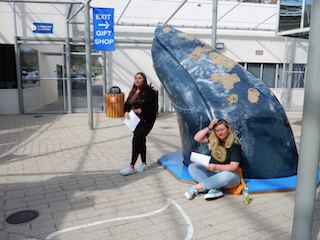
-
|

-
| 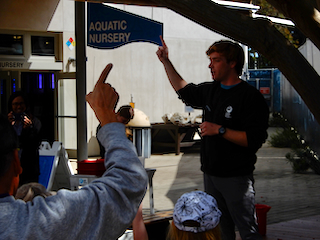
-
| 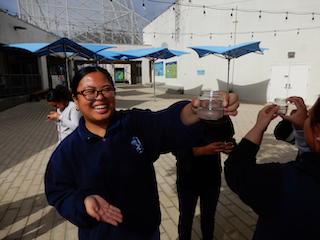
-
|
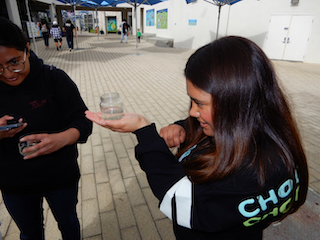
-
| 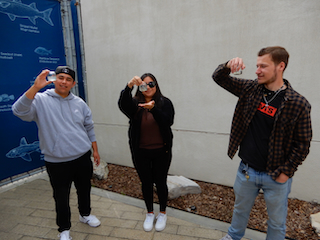
-
| 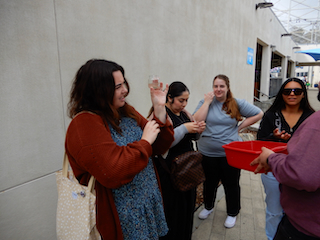
-
|
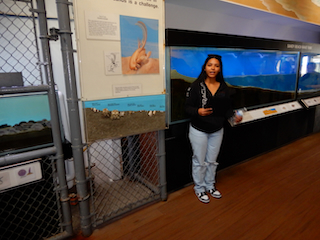
-
| 
-
| 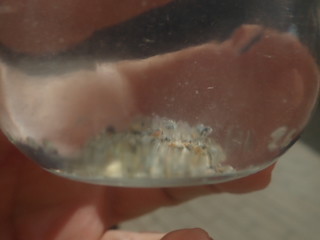
-
|
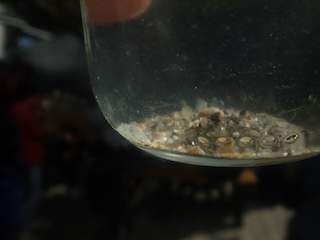
-
| 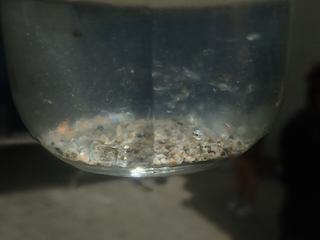
-
| 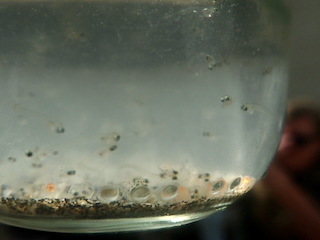
-
|
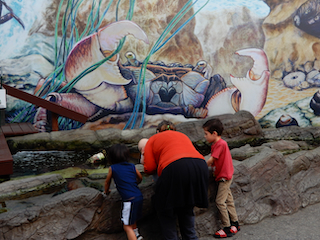
-
| 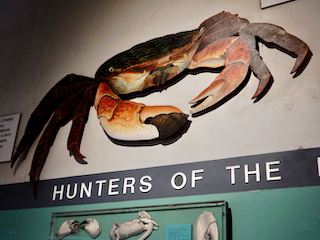
-
| 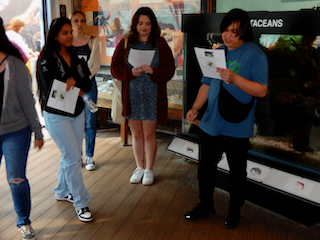
-
|
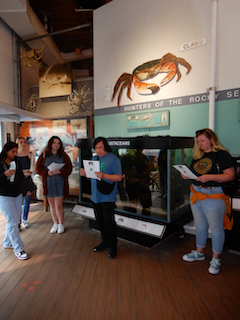
-
| 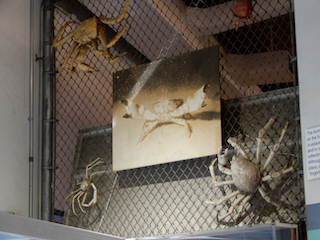
-
|
 Under Construction!
Under Construction! Under Construction!
Under Construction!